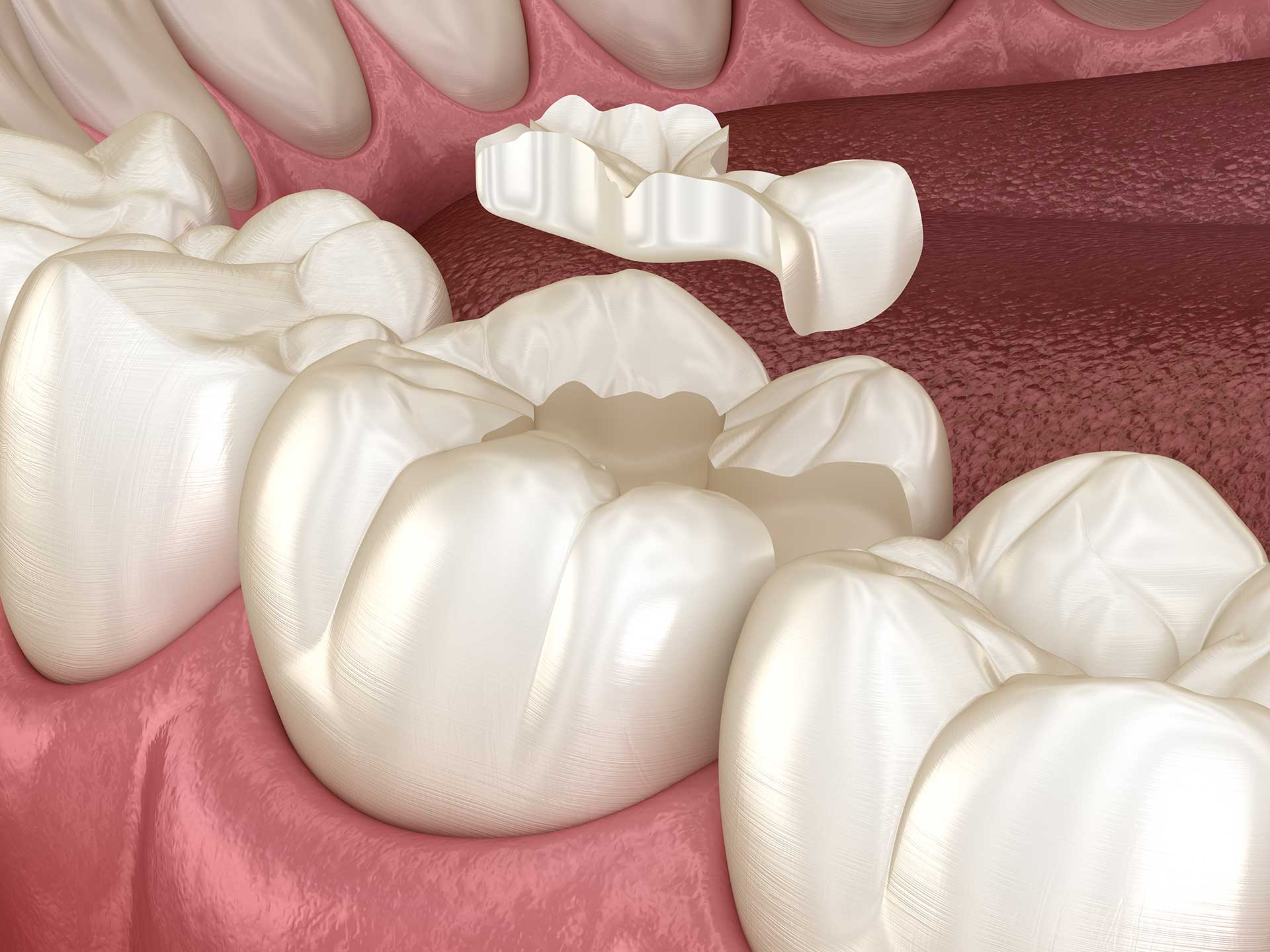While traditional fillings (amalgam or composite) are effective in treating tooth decay and fractures, more advanced solutions are needed to increase tooth durability and maintain aesthetics, especially in cases of extensive tooth material loss. At this point, This is where porcelain inlays and onlays come in. These restorations, also known as "porcelain fillings," offer a long-lasting and natural solution by maximizing the preservation of the remaining healthy tissue of the tooth.
Porcelain inlays and onlays are custom-made in a dental laboratory after precise impressions are taken of the tooth, rather than directly in the mouth by the dentist. This precise manufacturing process allows the filling to blend perfectly with the tooth surface and adjacent teeth. The key difference between inlays and onlays is the area they cover on the tooth: Inlay fillings are used for smaller damages that do not involve the cusps (tubercles) on the chewing surface of the tooth, Onlay fillings repair material loss in larger areas by enclosing one or more crowns and envelop the tooth like a crown.
Natural Look and Perfect Harmony
The greatest advantage of porcelain fillings is their superior aesthetic solution. The translucency and color of the ceramic material used are so close to natural tooth enamel that the filling is virtually unnoticeable after application. In a laboratory environment, the tooth's shape, surface anatomy, and contact points with adjacent teeth are adjusted with millimeter precision. This not only ensures an aesthetically pleasing appearance but also minimizes the risk of food accumulation between teeth. The result is a completely natural, symmetrical, and functional tooth structure.
Superior Durability and Longevity
Inlays and onlays are significantly longer-lasting than traditional fillings. Produced in a laboratory under high heat and pressure, porcelain offers exceptional resistance to chewing forces. This significantly reduces the risk of fracture over time, particularly in teeth requiring large fillings or those that have undergone root canal treatment, due to the difference in elasticity of composite fillings. Chemically bonded to the tooth using special bonding techniques, porcelain strengthens the tooth structure and acts as if it were part of the tooth. This durability also minimizes the risk of leakage and secondary decay at the edges of the filling.
The Most Minimal Approach to Female Preservation (Minimal Invasiveness)
The overarching philosophy behind onlays and inlay fillings is to maximize the preservation of healthy tooth tissue. Unlike crowns, which require the entire tooth to be cut down to size when extensive damage is present, inlays and onlays only remove the decayed and damaged areas. This leaves all remaining healthy parts of the tooth intact. Onlay fillings, in particular, are considered one of the most conservative treatment options, protecting teeth from the need for crowns by encasing and strengthening the cusps at risk of fracture, without covering the entire tooth. This minimally invasive approach is crucial for the future health of your teeth.
This text is intended to provide general information. The appropriate treatment method for each patient may vary, and therefore, a dentist who is an expert in the field should be consulted. Before making any decision regarding dental health, it is of great importance that you have a detailed examination and consultation with your physician. These articles are for informational purposes only and are not intended to replace professional medical advice.



 by
by